Dark tourism: from where you wouldn’t rather be
Fancy trading in Disneyland for a bit of death, disaster or atrocity on your next holiday? It’s not as unthinkable as it may seem. Dark tourism is one of the fastest growing sectors in the tourism industry. But what’s driving it? Sarah Kleven investigates.
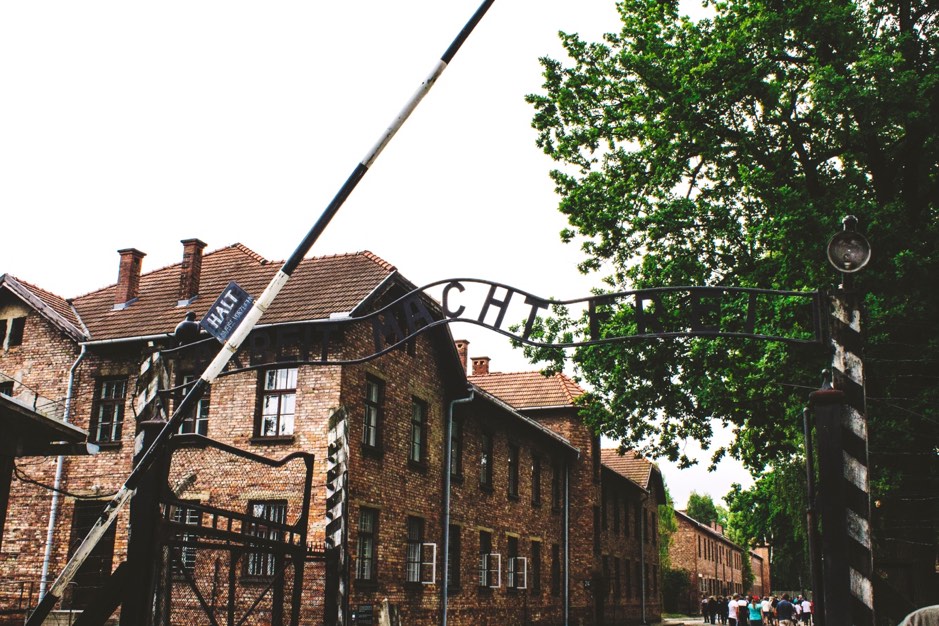
Upon visiting Auschwitz, I was quite disturbed by two things: the absence and the presence. The absence of filth, stench, cruelty, cold and suffering. The presence of hundreds of people lined up at the entrance of the camp beside the chokingly full, hot car park. The reception area, which was once the prisoner reception building, now has a cinema, coffee shop, restaurant, toilets, bookshop, post office, currency exchange and vending machines. I wondered how this polished touristic experience could ever represent history accurately and what I was going to gain from this experience.
In summer, anyone passing through the concentration camp sees a jamboree of people, behaving in many different ways. The tears and shocked faces which would be expected in a site of such cruelty and suffering, on my visit, were replaced with a great lack of empathy and even the occasional smile or laughter. My partner faced a moral decision when asked to take a tourist shot of a couple in our group smiling in front of the renowned railway at Birkenau. I watched as a young man shoved his iPhone into the torture standing cell, despite photography there being forbidden. A group of friends, holding a selfie stick smiling as they took a photo, their backdrop? A block where prisoners were tortured and executed in various ways.
Anyone who visits Auschwitz concentration camp will remember the room with the hair piled behind glass, in a mound taller than a person. Two tonnes of hair, which is only a fraction of the hair cut from the heads of the prisoners of Auschwitz; the rest of the hair was sent to a factory in Bavaria to be made into various products. The hair has now faded into a barely differentiable grey mass, when it was once brown, blonde, grey, black and red.
Auschwitz was not built to last. But now close to two million people walk the grounds of the camp, where millions of people were once tortured and murdered over seven decades ago. Over the last ten years Auschwitz has seen a rise of close to a million visitors, forcing them to limit the number of people entering the site every hour.
From Auschwitz to Port Arthur, from the 9/11 memorial in New York to the killing fields in Cambodia, from Princess Diana’s car crash site to Chernobyl, ‘dark tourism’ or ‘thanatourism’ is one of the fastest growing sectors of the international tourism market and its rise in popularity is uncovering new moral and ethical questions about the meaning of death and memorialisation.
Like the thousands of Australians who made the trip to Gallipoli for ANZAC day, more and more people are intentionally travelling to places that can only be described as dark. Hundreds of sites of death, disaster and suffering are polishing up their tombstones for public display.
Peter Hohenhaus, the author and creator of dark-tourism.com, that outlines and rates almost 800 ‘dark tourism’ sites around the world, has visited around 600 sites himself. Peter confirms a definite rise in visitors to dark tourism sites through information from colleagues in the industry and analysis of published visitor number statistics.
“People visit such sites because it is interesting. More interesting than Disneyland or lying on a beach switching one’s brain off. Dark tourism is a type of educational heritage tourism and for the most part, has nothing to do with voyeurism,” said Mr Hohenhaus.
Whilst visits to most dark tourism sites appear to be increasing, others are dwindling or stagnating.
For example, Hiroshima’s Peace Memorial Museum annual visitor numbers have consistently remained slightly above or below one million visitors since the 1960s. However, the number of foreign visitors has increased consistently from thirty thousand visitors in 1970 to 234,360 in 2014.
In the case of the Killing Fields in Cambodia, tourism has increased by forty percent every year since 1998.
The Anne Frank House in Amsterdam has also seen a consistently mounting annual visitation number, reaching a million visitors in 2007 and growing to 1.2 million visitors since then.
However, visits to sites such as Port Arthur have stagnated; remaining consistently around 250,000 visitors annually over the last ten years with annual ghost tour participation actually decreasing by 20,000 people since 2005.
But why this strong motivation to visit dark tourism sites? Is a visit to Auschwitz, for example, purely educational or does it also represent more dubious motivations? Should we even be preserving these sites at all or should we let vines consume them as they decay and crumble slowly to the ground?
“I really want to go to Auschwitz,” I recall saying to my partner and travel companion for two months across Europe last year. I felt a bit sick saying it, but nevertheless I did want to visit Auschwitz, along with 1.75 million other people in 2015. I told myself that my motivation stemmed from a strong interest in World War II history and a curiosity about how any human being could be capable of such atrocity.
There are many reasons that people want to visit Auschwitz. For Olga Horak, a former prisoner of the Auschwitz and Bergen-Belson camps, the visit was a kind of pilgrimage and something which she felt was important for her to do.
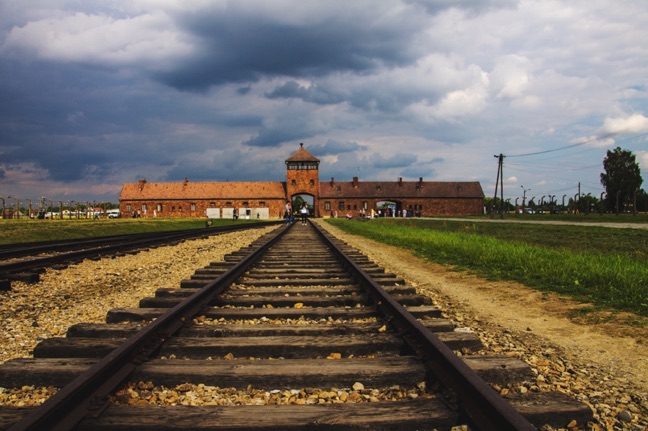
“I wouldn’t have gone on my own … It was important for my daughter to see; it was an eye opener for her. You can’t believe anything like this and you can’t believe your mother was there.”
For victims of atrocity and their families, journeying back to these sites is common.
For others with no intimate connection to the site there has to be a different motivation. Professor Philip Stone of the Institute for Dark Tourism at the University of Central Lancashire, writes of dark tourism as a form of secular pilgrimage.
In Western secular society where ordinary death is sequestered behind medical and professional facades, yet extraordinary death is recreated for popular consumption, dark tourism mediates a potential social filter between life and death.
From this perspective it could be concluded that dicing with death and dark tourist sites are a way of heightening our own sense of mortality and perhaps even replacing a void left by the rejection of structured religious practice with new forms of meaning making.
But for some the term ‘dark tourism’ has clear overtones of a fascination in death and delighting in the suffering of others, driven by a degree of voyeurism or even Schadenfreude.
A normal reaction to an abnormal situation is impossible to define. Auschwitz concentration camp, across history, is a completely beyond abnormal situation. The truth is there is no right or wrong way to visit Auschwitz.
Ashley Carruthers, an anthropologist from the Australian National University, who has himself visited many dark tourist sites in South East Asia, says that dark tourism sites are like interpreting a work of art.
LISTEN: Excerpt from Ashley Carruthers interview
“The artist can’t actually dictate how you interpret the work, the meaning that’s taken is somewhere between the intention of the artist and what the viewer brings to it,” he says. “I think dark tourist sites are exactly the same. You can have the most perfectly curated and informative site and depending on the orientation or the knowledge of the person who comes, they can have a completely unexpected, unintended sometimes morally problematic interpretation.
“I would say there’s a risk that people might misinterpret these sites and so on, but I think it’s outweighed by the educational function and the potential of these places.”
At most sites the hungry eyes of tourists are less consequential than we may fear. This is because most dark tourism destinations resonate with the material palpability of the atrocities of which they represent. It becomes very hard not to be moved.
On one hand dark tourism may not make the unimaginable any more imaginable. But on the other hand, perhaps it is the closest clue. Beyond reading memoirs, interviewing eyewitnesses, watching testimony and archival footage, studying photographs, documents, letters and newspapers, there is something about being in the actual place that links clues from all the different sources together.
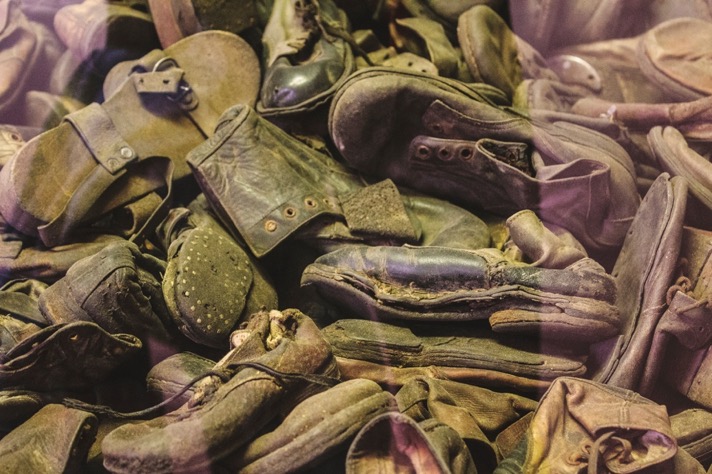
“The fantasy that the backpacker tourist has about dark tourism sites is understood by the curators and they are feeding that desire. Which is a completely normal tourism situation,” explains Carruthers.
“If you’re too focused on the authenticity about the place or you’re offering something too complex or that doesn’t meet tourist’s expectations, then you’re going to fail. And I think we see the same thing going on in dark tourism sites in that way.”
Carruthers argues that even uninformed, spontaneous visits to dark tourism sites are important as a starting point for real deep engagement with historical events.
“You can’t drag everyone through the deep history of a place but I think ideally for those who are interested or troubled or keep thinking about a place because of a reaction to it, then that’s a start to reading other things about it. Often when you dig into the academic side of things you leave that popular narrative or mainstream narrative behind straight away.”
Visiting a dark tourism site is a three-dimensional tactile experience that allows walking through, touching, smelling, seeing and hearing. Yet it is important to remember that this experience is the present, not the past. Being there and experiencing a site cannot function as a step back in time, but perhaps can gesture to the location of pain, memory and depth.
“There were very few people who purposefully touched the fence to commit suicide. That is important to mention. That humankind doesn’t give in easily and you always hope that it is human nature that you don’t give in and you don’t want to die,” says Mrs Horak.
“Today I wonder that maybe they were clever to avoid all the torture that happened to us.”
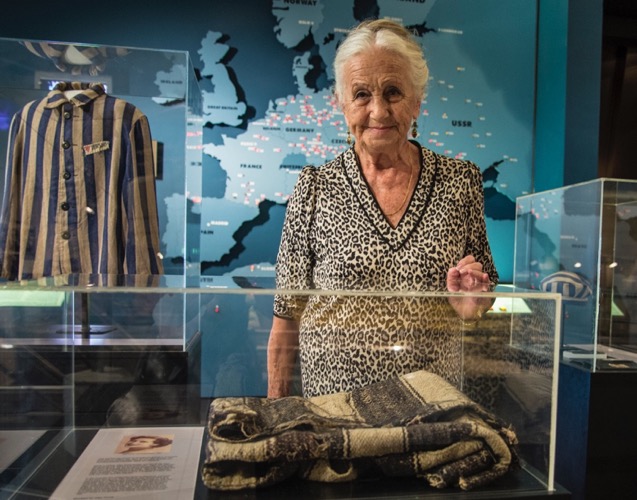
Olga is one of the ‘fortunate’ people to have survived the concentration camps of World War II, however, she lost her entire family to the Nazis. Her mother, who was such a solace to her throughout her time at both Auschwitz and Bergen-Belson, collapsed and died the moment she was listed as a survivor during liberation in 1945.
“What happened to us is something that had never happened before, and after 71 years, it still hurts. It can never be forgotten; neither do I want to forget,” she says. “It is something which you can’t comprehend with normal thinking, anything like this…But you can’t judge today what it looked like before.”
Listening to the unimaginable horrors of the Holocaust from survivors, you shrink, stunned. But what is horrifying at another level is the denial of the Holocaust even occurring. A study by the Anti-Defamation League posed to tens of thousands of people in nearly 100 countries shows that half of the people in the world have never heard of the Holocaust. In the other half, a third of this group simply did not believe the Holocaust even happened.
“Seventy-one years after the war I still have to be here to tell people the truth and this is why I am driven to talk about it for as long as I can. It is of the upmost importance to document the truth, it cannot be omitted, its impossible, it happened,” says Olga.
Perhaps people having superficial or generic experiences at these sites is not the main issue, nor is mythmaking and sensationalising in dark tourism sites. The real problem with dark tourism is that we build memorials and visit sites of commemoration without doing anything about current, continuing discriminations and immoralities. Perhaps this is the most important part of remembrance – future action. This is what is missing from the ruin and the rubble, the tourist brochures and the plaques.
In visiting and trampling over these sites, perhaps tourists do have a responsibility. Not only to never forget but also to act in the face of current atrocities or signs of renormalisation of immorality or oppressive state control.
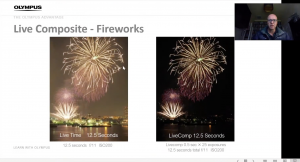
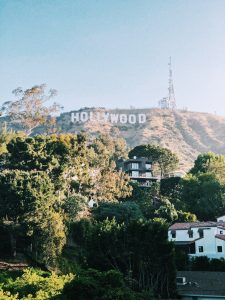
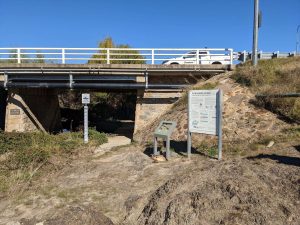

Be the first to comment!